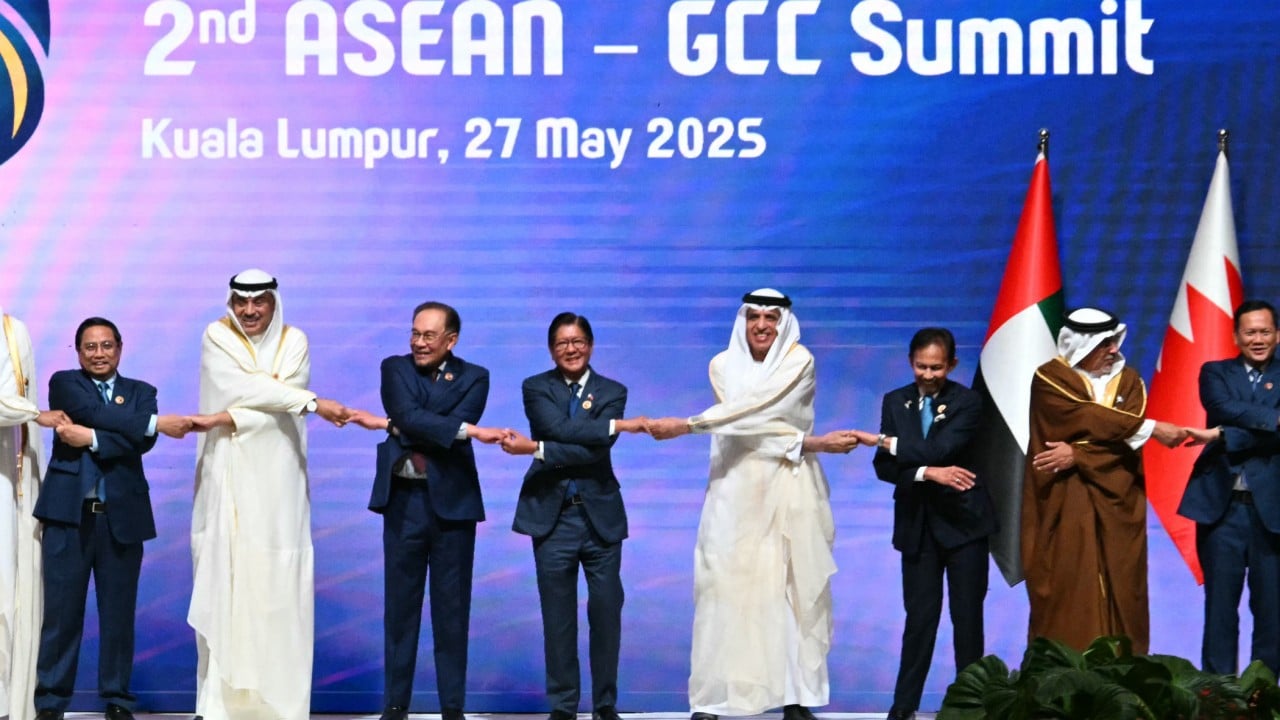When Gulf leaders touched down in Kuala Lumpur for a summit with the Association of Southeast Asian Nations this May, the ink was barely dry on their massive investment pledges of some US$2 trillion in the United States to placate President Donald Trump.
Advertisement
But as the summit doors closed, the senior officials from the Gulf Cooperation Council (GCC) turned their attention eastward, towards forging a pan-Asian economic zone reminiscent of Brics that could shield them and Asean from the unpredictability of Washington’s erratic tariffs and dictates.
“The need to diversify trade away from an unpredictable US administration is likely to further fuel new links, including with GCC countries,” said Jayant Menon,, a visiting senior fellow at the ISEAS–Yusof Ishak Institute in Singapore.
Asean and the GCC – comprising Saudi Arabia, the United Arab Emirates, Qatar, Kuwait, Oman and Bahrain – “have been trying to increase trade and investment links for some time now”, Menon told This Week in Asia.

He said a decision made last year to pursue a free-trade agreement between the two blocs had been “empowered” by May’s summit, when leaders agreed to commission a feasibility study into an Asean-GCC free trade pact.
Advertisement

